Dong Chu
Institute of Fundamental and Frontier Science, University of Electronic Science and Technology of China, Chengdu, China
Adaptive Regularized Low-Rank Tensor Decomposition for Hyperspectral Image Denoising and Destriping
Jan 11, 2024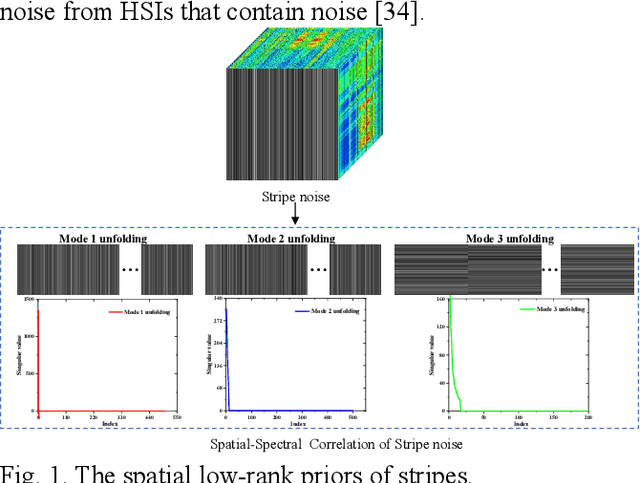

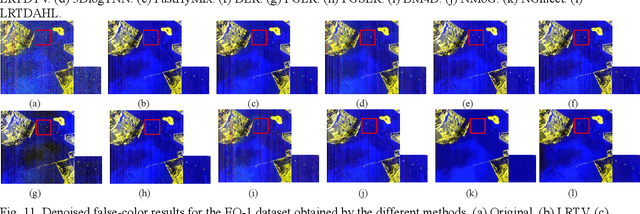
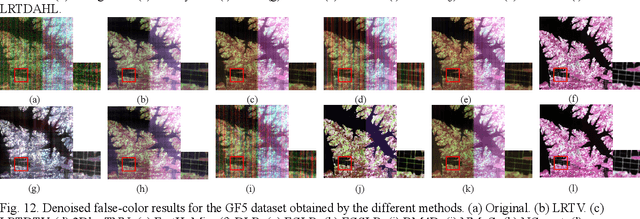
Abstract:Hyperspectral images (HSIs) are inevitably degraded by a mixture of various types of noise, such as Gaussian noise, impulse noise, stripe noise, and dead pixels, which greatly limits the subsequent applications. Although various denoising methods have already been developed, accurately recovering the spatial-spectral structure of HSIs remains a challenging problem to be addressed. Furthermore, serious stripe noise, which is common in real HSIs, is still not fully separated by the previous models. In this paper, we propose an adaptive hyperLaplacian regularized low-rank tensor decomposition (LRTDAHL) method for HSI denoising and destriping. On the one hand, the stripe noise is separately modeled by the tensor decomposition, which can effectively encode the spatial-spectral correlation of the stripe noise. On the other hand, adaptive hyper-Laplacian spatial-spectral regularization is introduced to represent the distribution structure of different HSI gradient data by adaptively estimating the optimal hyper-Laplacian parameter, which can reduce the spatial information loss and over-smoothing caused by the previous total variation regularization. The proposed model is solved using the alternating direction method of multipliers (ADMM) algorithm. Extensive simulation and real-data experiments all demonstrate the effectiveness and superiority of the proposed method.
On the Design of Communication-Efficient Federated Learning for Health Monitoring
Nov 30, 2022



Abstract:With the booming deployment of Internet of Things, health monitoring applications have gradually prospered. Within the recent COVID-19 pandemic situation, interest in permanent remote health monitoring solutions has raised, targeting to reduce contact and preserve the limited medical resources. Among the technological methods to realize efficient remote health monitoring, federated learning (FL) has drawn particular attention due to its robustness in preserving data privacy. However, FL can yield to high communication costs, due to frequent transmissions between the FL server and clients. To tackle this problem, we propose in this paper a communication-efficient federated learning (CEFL) framework that involves clients clustering and transfer learning. First, we propose to group clients through the calculation of similarity factors, based on the neural networks characteristics. Then, a representative client in each cluster is selected to be the leader of the cluster. Differently from the conventional FL, our method performs FL training only among the cluster leaders. Subsequently, transfer learning is adopted by the leader to update its cluster members with the trained FL model. Finally, each member fine-tunes the received model with its own data. To further reduce the communication costs, we opt for a partial-layer FL aggregation approach. This method suggests partially updating the neural network model rather than fully. Through experiments, we show that CEFL can save up to to 98.45% in communication costs while conceding less than 3% in accuracy loss, when compared to the conventional FL. Finally, CEFL demonstrates a high accuracy for clients with small or unbalanced datasets.
Long time-series NDVI reconstruction in cloud-prone regions via spatio-temporal tensor completion
Feb 04, 2021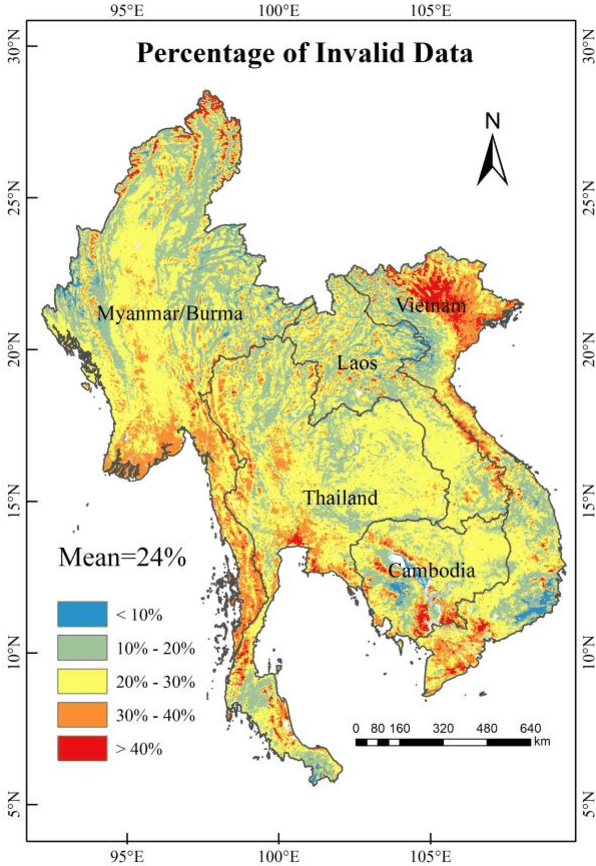

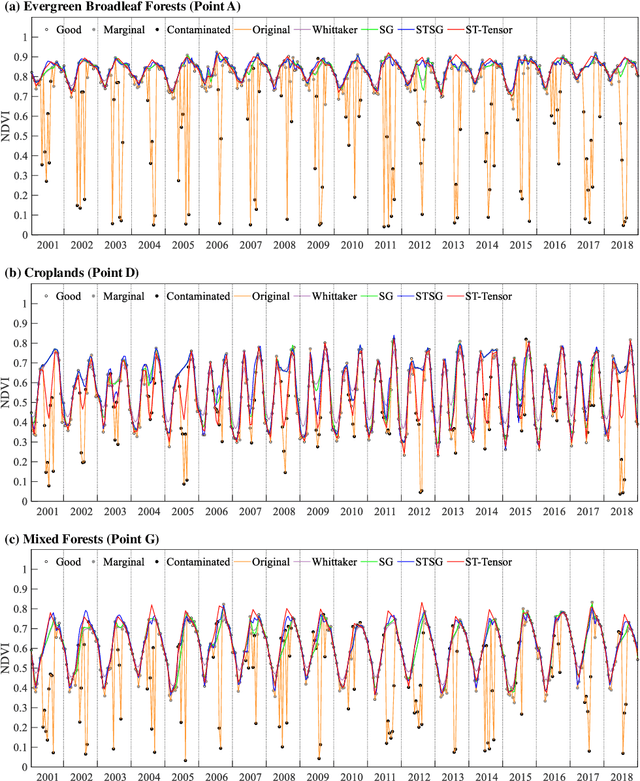
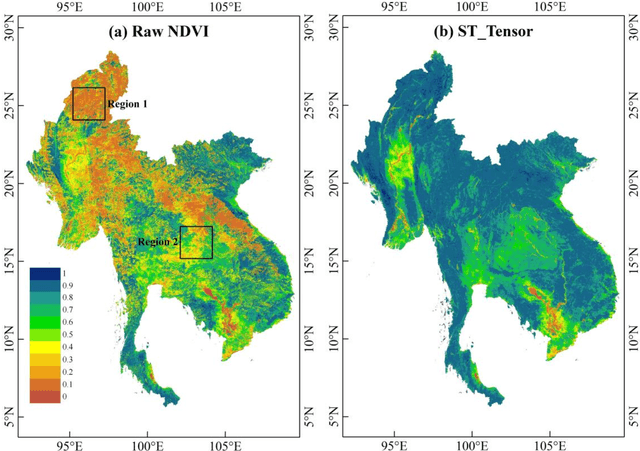
Abstract:The applications of Normalized Difference Vegetation Index (NDVI) time-series data are inevitably hampered by cloud-induced gaps and noise. Although numerous reconstruction methods have been developed, they have not effectively addressed the issues associated with large gaps in the time series over cloudy and rainy regions, due to the insufficient utilization of the spatial and temporal correlations. In this paper, an adaptive Spatio-Temporal Tensor Completion method (termed ST-Tensor) method is proposed to reconstruct long-term NDVI time series in cloud-prone regions, by making full use of the multi-dimensional spatio-temporal information simultaneously. For this purpose, a highly-correlated tensor is built by considering the correlations among the spatial neighbors, inter-annual variations, and periodic characteristics, in order to reconstruct the missing information via an adaptive-weighted low-rank tensor completion model. An iterative l1 trend filtering method is then implemented to eliminate the residual temporal noise. This new method was tested using MODIS 16-day composite NDVI products from 2001 to 2018 obtained in the region of Mainland Southeast Asia, where the rainy climate commonly induces large gaps and noise in the data. The qualitative and quantitative results indicate that the ST-Tensor method is more effective than the five previous methods in addressing the different missing data problems, especially the temporally continuous gaps and spatio-temporally continuous gaps. It is also shown that the ST-Tensor method performs better than the other methods in tracking NDVI seasonal trajectories, and is therefore a superior option for generating high-quality long-term NDVI time series for cloud-prone regions.
When does the Physarum Solver Distinguish the Shortest Path from other Paths: the Transition Point and its Applications
Jan 08, 2021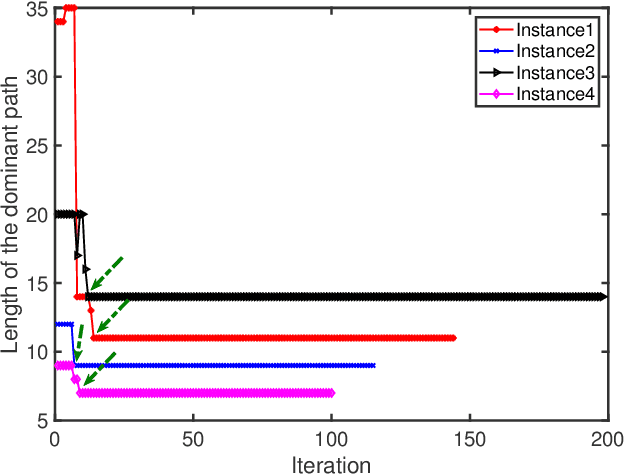
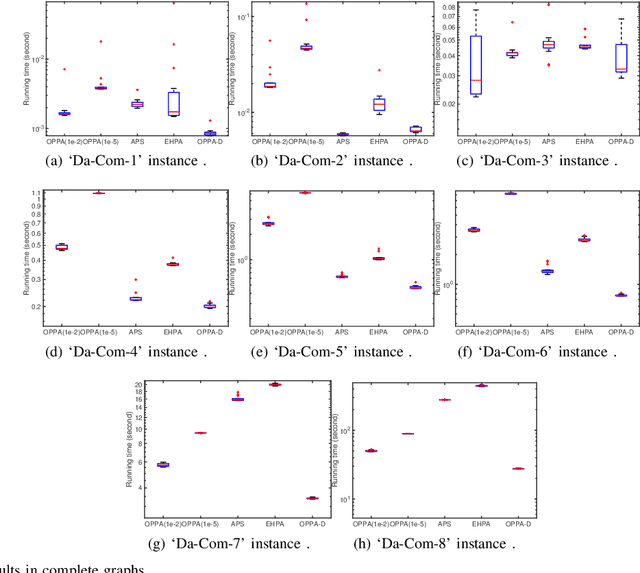
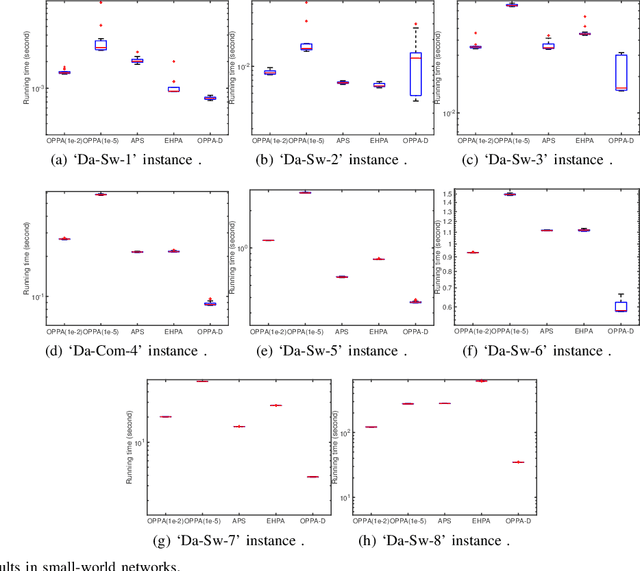
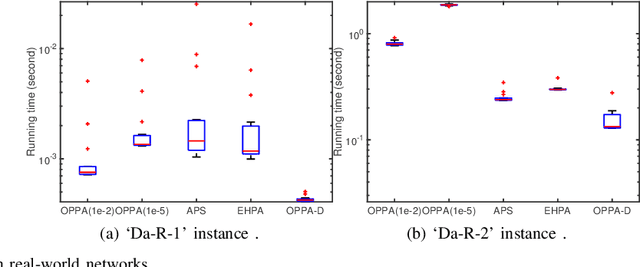
Abstract:Physarum solver, also called the physarum polycephalum inspired algorithm (PPA), is a newly developed bio-inspired algorithm that has an inherent ability to find the shortest path in a given graph. Recent research has proposed methods to develop this algorithm further by accelerating the original PPA (OPPA)'s path-finding process. However, when does the PPA ascertain that the shortest path has been found? Is there a point after which the PPA could distinguish the shortest path from other paths? By innovatively proposing the concept of the dominant path (D-Path), the exact moment, named the transition point (T-Point), when the PPA finds the shortest path can be identified. Based on the D-Path and T-Point, a newly accelerated PPA named OPPA-D using the proposed termination criterion is developed which is superior to all other baseline algorithms according to the experiments conducted in this paper. The validity and the superiority of the proposed termination criterion is also demonstrated. Furthermore, an evaluation method is proposed to provide new insights for the comparison of different accelerated OPPAs. The breakthrough of this paper lies in using D-path and T-point to terminate the OPPA. The novel termination criterion reveals the actual performance of this OPPA. This OPPA is the fastest algorithm, outperforming some so-called accelerated OPPAs. Furthermore, we explain why some existing works inappropriately claim to be accelerated algorithms is in fact a product of inappropriate termination criterion, thus giving rise to the illusion that the method is accelerated.
The Capacity Constraint Physarum Solver
Oct 19, 2020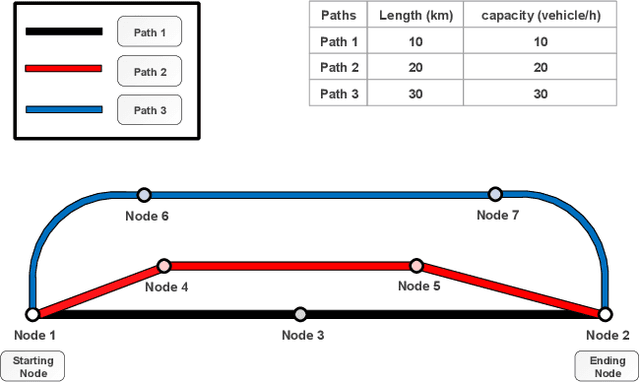

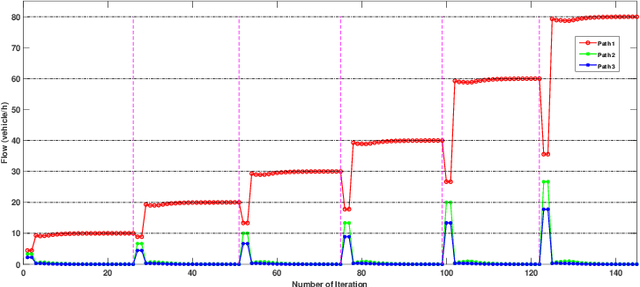

Abstract:Physarum polycephalum inspired algorithm (PPA), also known as the Physarum Solver, has attracted great attention. By modelling real-world problems into a graph with network flow and adopting proper equations to calculate the distance between the nodes in the graph, PPA could be used to solve system optimization problems or user equilibrium problems. However, some problems such as the maximum flow (MF) problem, minimum-cost-maximum-flow (MCMF) problem, and link-capacitated traffic assignment problem (CTAP), require the flow flowing through links to follow capacity constraints. Motivated by the lack of related PPA-based research, a novel framework, the capacitated physarum polycephalum inspired algorithm (CPPA), is proposed to allow capacity constraints toward link flow in the PPA. To prove the validity of the CPPA, we developed three applications of the CPPA, i.e., the CPPA for the MF problem (CPPA-MF), the CPPA for the MCFC problem, and the CPPA for the link-capacitated traffic assignment problem (CPPA-CTAP). In the experiments, all the applications of the CPPA solve the problems successfully. Some of them demonstrate efficiency compared to the baseline algorithms. The experimental results prove the validation of using the CPPA framework to control link flow in the PPA is valid. The CPPA is also very robust and easy to implement since it could be successfully applied in three different scenarios. The proposed method shows that: having the ability to control the maximum among flow flowing through links in the PPA, the CPPA could tackle more complex real-world problems in the future.
 Add to Chrome
Add to Chrome Add to Firefox
Add to Firefox Add to Edge
Add to Edge